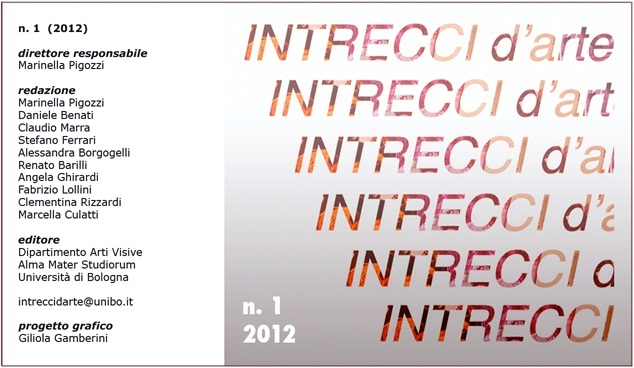The heritage of classical tradition in the 5th and the 6th century wall mosaics: iconographic and stylistic issues
DOI:
https://doi.org/10.6092/issn.2240-7251/2648Keywords:
Ravenna, Wall mosaics, Classical tradition, Iconography, Vth century, VIth centuryAbstract
Since the 3rd century, Christian art, as evidenced by the catacomb paintings, appears to be strongly rooted in classical tradition. Above all, it is constantly grafted on the celebrating themes of the aulic iconography: deeply nourished by them, it generates a new ideological and spiritual lymph. With regard to wall mosaics, this is evident in several iconographic themes, such as the offer of the crown that echoes the Roman imperial model of aurum coronarium, offered to emperor from the vanquished; the Magi in their gestures recall the subjugation of the barbarian kings to the emperor; the acclamatio of the Apostles who raise their right hand as dignitaries cheering the victorious emperor; Christ in the act of trampling on saeva crimina; the laurel wreath as a symbol of victory; the imagines clipeatae containing the busts of saints, which bring us back to the Roman portraiture of the late-republican period, or even the fake mosaic architectures of the dome of the Neonian Baptistery in Ravenna, and those of the St. George Rotunda in Thessaloniki, which rank both on the road to Hellenistic illusionism, recalling the Pompeii frescoes. Through the discussion of these and other illuminating images, the main purpose of this article in to tackle and investigate issues related to the continuity of the classical tradition in the wall mosaics in Ravenna and in Byzantine area in the fifth and sixth century, both in terms of iconography and style. And this, in the wake of the authoritative studies by Beat Brenk and Ernst Kitzinger who brought forward an interesting scientific debate on these topics.
Downloads
How to Cite
Issue
Section
License
Copyright (c) 2012 Letizia Sotira
The copyrights of all the texts on this journal belong to the respective authors without restrictions.
This journal is licensed under a Creative Commons Attribution 4.0 International License (full legal code).
See also our Open Access Policy.
Images and photographs may have different terms of license.
In making material available online the Journal acts in good faith. Parties who have questions or who wish to contest the use of specific works may contact the Editor in chief.
Metadata
All the metadata of the published material is released in the public domain and may be used by anyone free of charge. This includes references.
Metadata — including references — may be re-used in any medium without prior permission for both not-for-profit and for-profit purposes. We kindly ask users to provide a link to the original metadata record.






